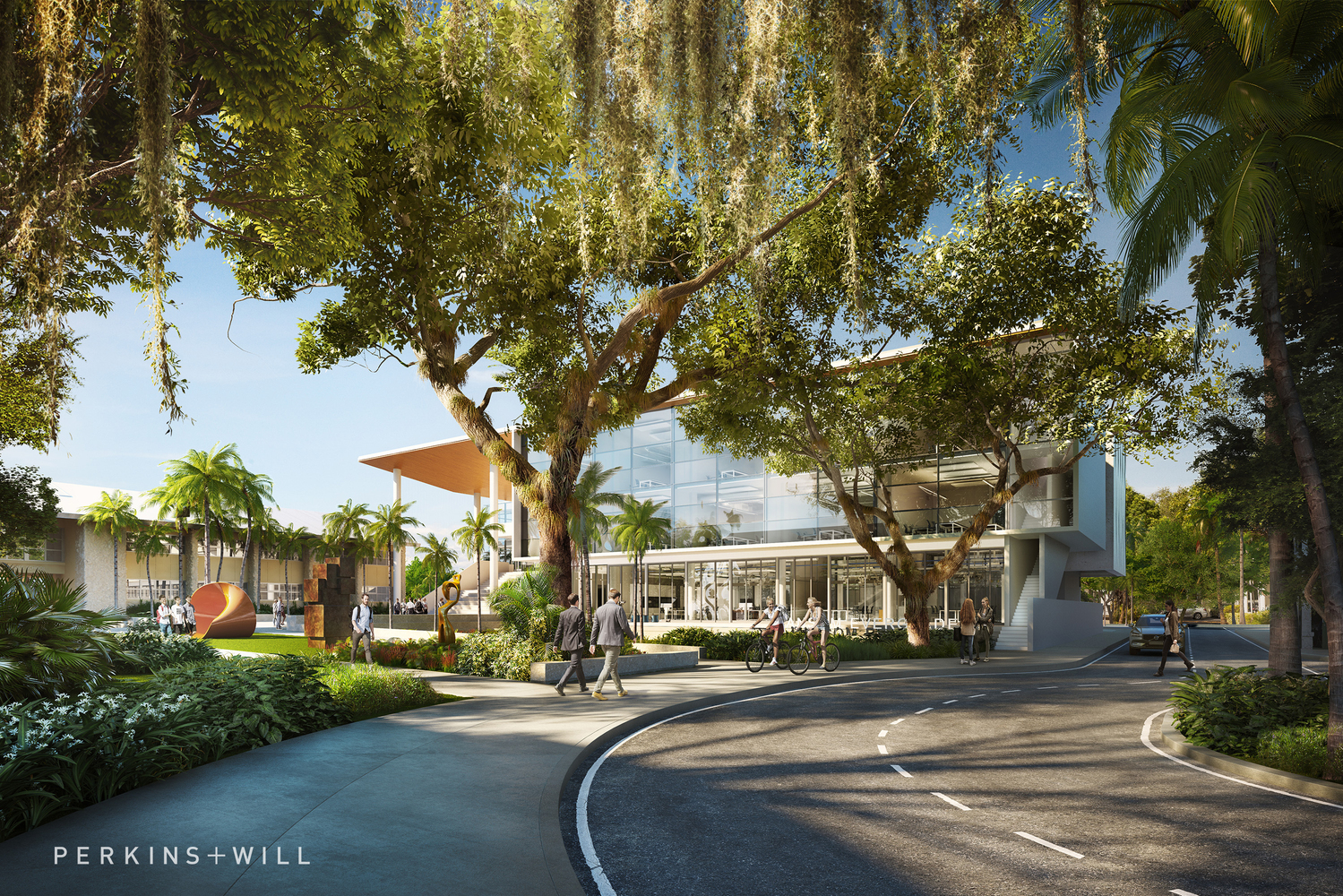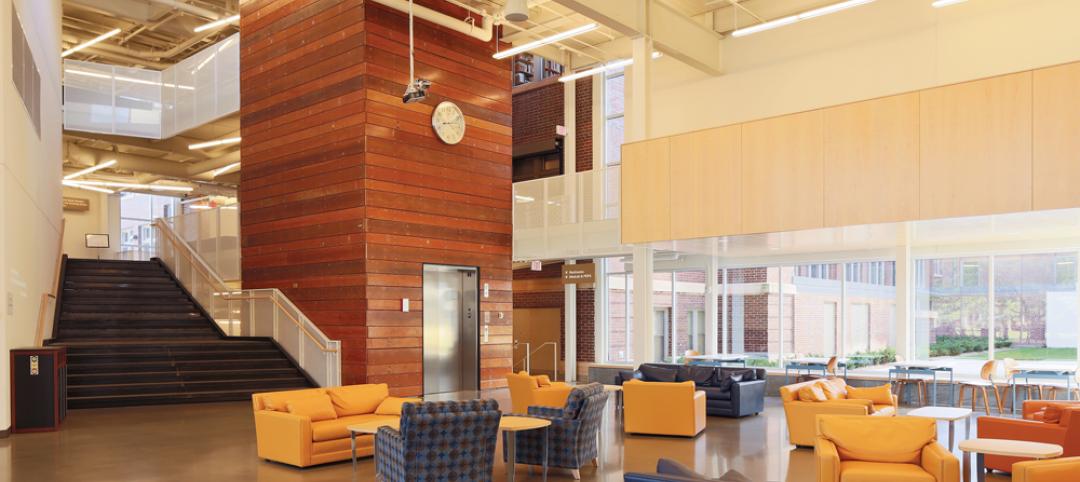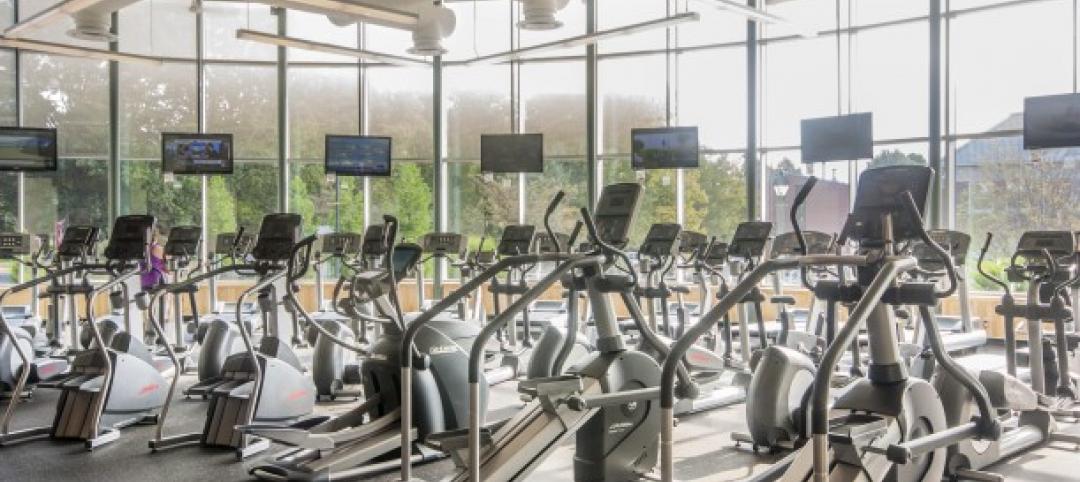Ransom Everglades School’s new 45,000-sf, three-story STEM facility will be a flexible space with the ability to adapt to a variety of learning needs, according to new details released by Perkins+Will, the project’s architect. The STEM facility is part of the larger master plan for the school’s Coconut Grove campus.
The building will feature 10 classrooms with movable walls and furniture, maker and fabrication labs, an outdoor rooftop lab, rooftop solar panels, a multi-purpose conference room, and a 200 person auditorium. The facility will include laboratories for earth sciences, biology, chemistry, and physics.
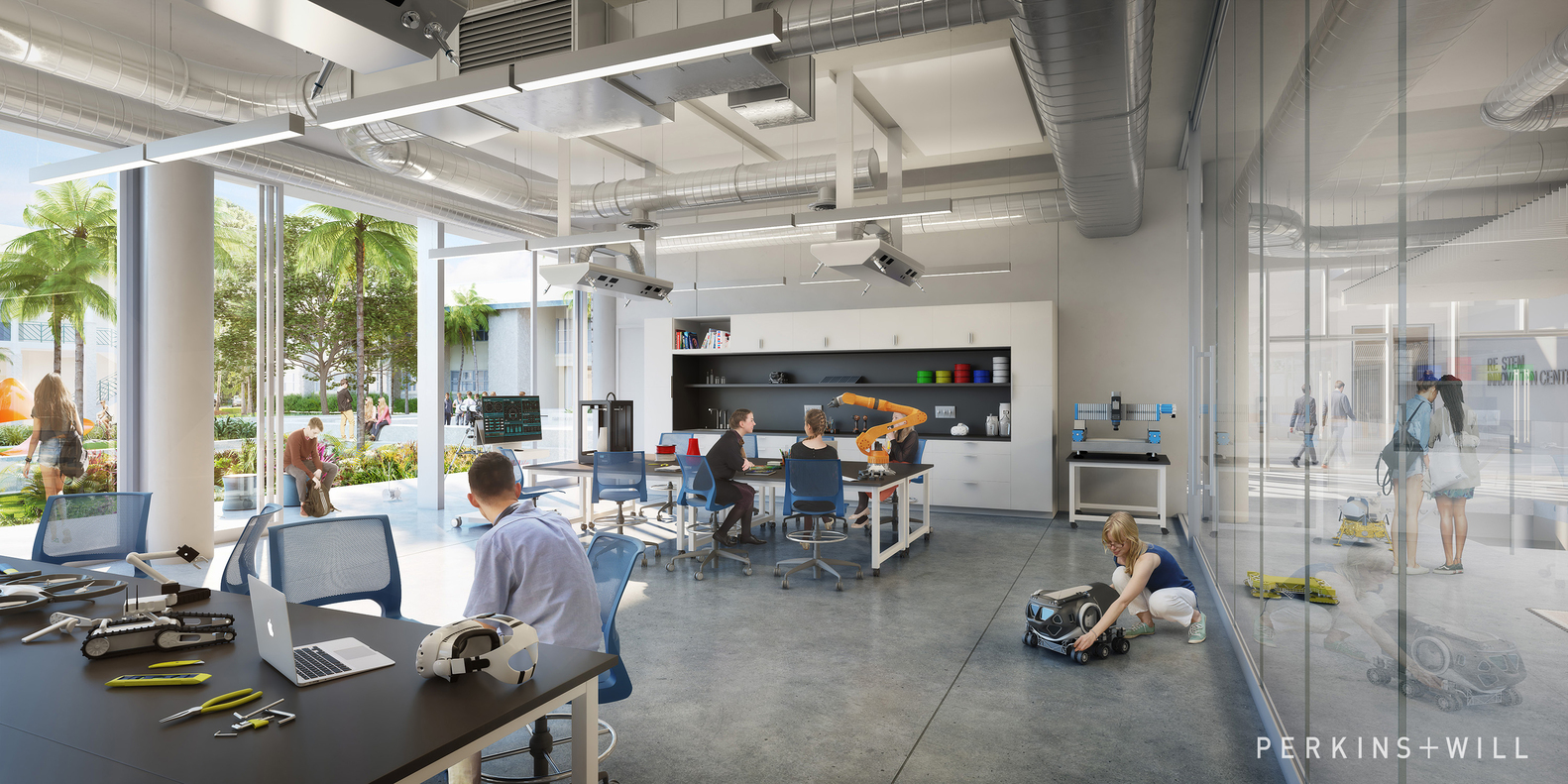
“It will be flexible, adaptable, collaborative; a think-tank type space,” said Pat Bosch, Design Director for Perkins+Will’s Miami office, while speaking to Ransom Everglades parents at a preview for the new building. “This is not a static building.”
The collaboration will pour out of the building and spill into the surrounding landscape as well. The project will create new outdoor breakout areas adjacent to the STEM building and a new quad. This connection between indoor and outdoor learning spaces is an important aspect of the new facility, which is slated to be ready for occupancy by early 2020.
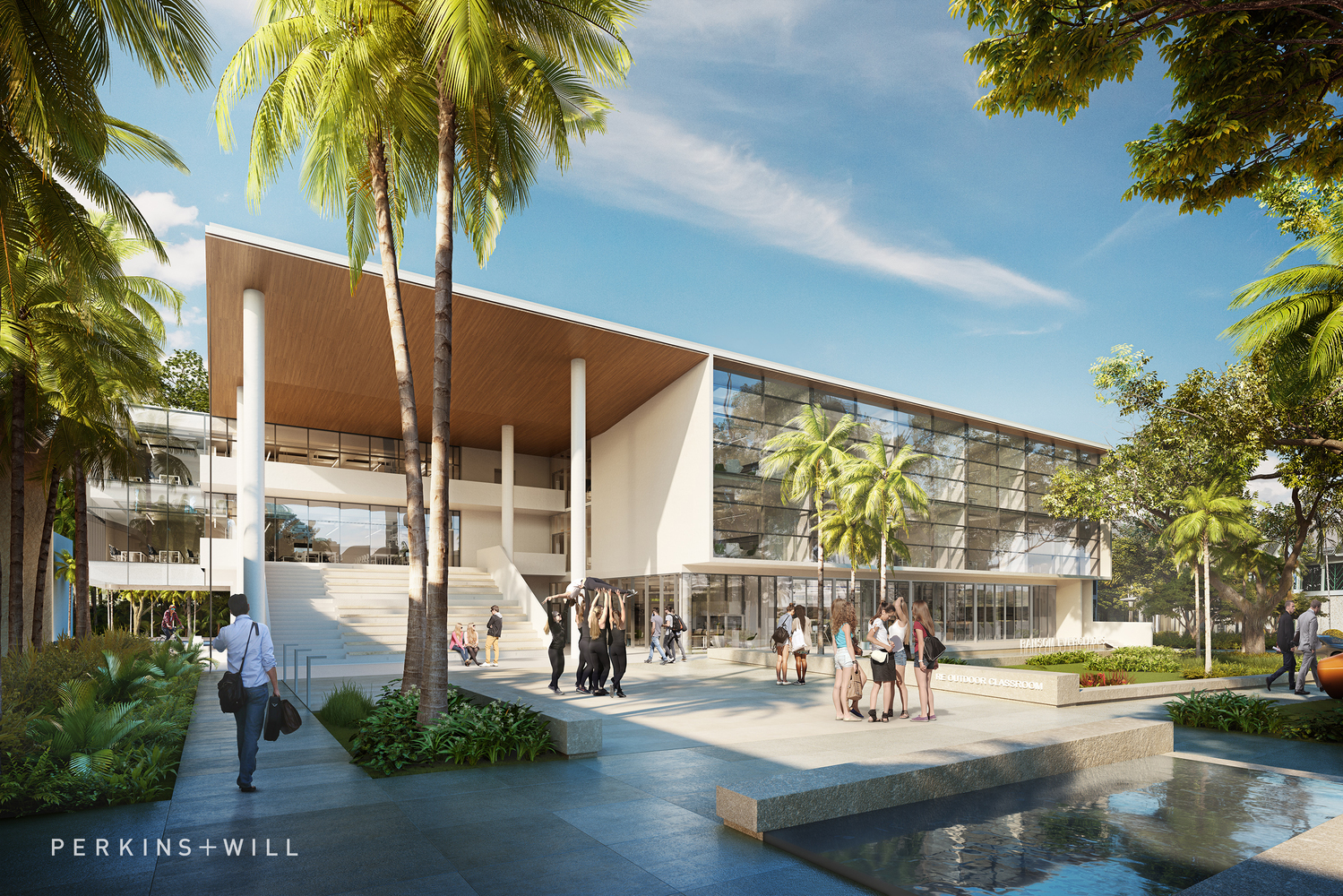

Related Stories
| Nov 19, 2013
Top 10 green building products for 2014
Assa Abloy's power-over-ethernet access-control locks and Schüco's retrofit façade system are among the products to make BuildingGreen Inc.'s annual Top-10 Green Building Products list.
| Nov 18, 2013
ASSA ABLOY, CertainTeed team up to tackle classroom acoustics
The new alliance has uncovered easily accessible solutions to address these acoustical challenges and reduce the sound reverberation that further complicates noise issues.
| Nov 15, 2013
Greenbuild 2013 Report - BD+C Exclusive
The BD+C editorial team brings you this special report on the latest green building trends across nine key market sectors.
| Nov 15, 2013
Halls of ivy keep getting greener and greener
Academic institutions have been testing the limits of energy-conserving technologies, devising new ways to pay for sustainability extras, and extending sustainability to the whole campus.
| Nov 13, 2013
Installed capacity of geothermal heat pumps to grow by 150% by 2020, says study
The worldwide installed capacity of GHP systems will reach 127.4 gigawatts-thermal over the next seven years, growth of nearly 150%, according to a recent report from Navigant Research.
| Nov 8, 2013
S+T buildings embrace 'no excuses' approach to green labs
Some science-design experts once believed high levels of sustainability would be possible only for low-intensity labs in temperate zones. But recent projects prove otherwise.
| Nov 8, 2013
Walkable solar pavement debuts at George Washington University
George Washington University worked with supplier Onyx Solar to design and install 100 sf of walkable solar pavement at its Virginia Science and Technology Campus in Ashburn, Va.
| Nov 7, 2013
Fitness center design: What do higher-ed students want?
Campus fitness centers are taking their place alongside student centers, science centers, and libraries as hallmark components of a student-life experience. Here are some tips for identifying the ideal design features for your next higher-ed fitness center project.
| Nov 5, 2013
Net-zero movement gaining traction in U.S. schools market
As more net-zero energy schools come online, school officials are asking: Is NZE a more logical approach for school districts than holistic green buildings?
| Nov 5, 2013
Oakland University’s Human Health Building first LEED Platinum university building in Michigan [slideshow]
Built on the former site of a parking lot and an untended natural wetland, the 160,260-sf, five-story, terra cotta-clad building features some of the industry’s most innovative, energy-efficient building systems and advanced sustainable design features.


